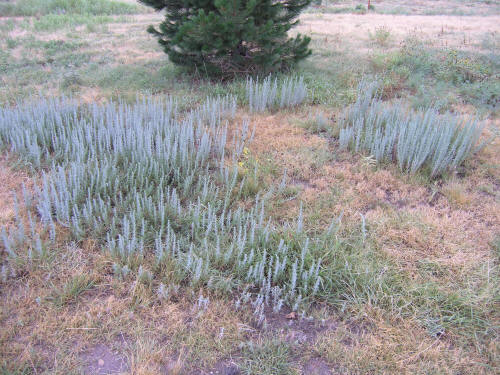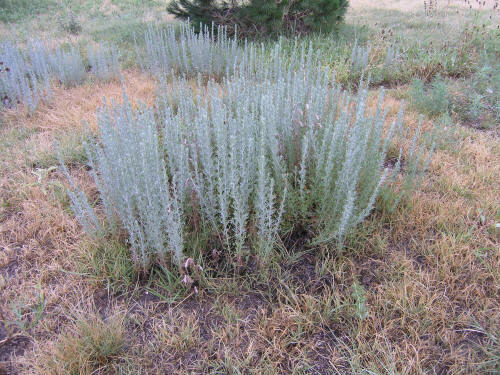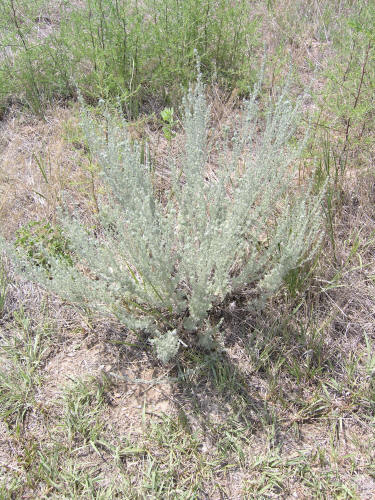Go to Midwest Weeds and Wildflowers Home Page
Fringed Sagebrush
Artemisia frigida Willd.
Asteraceae (Sunflower Family)
▲ Seedlings
▲▼new growth arising from older plant in spring
▲▼pre-flowering growth

▲▼pre-flowering growth

▲▼ flowering plants

Artemisia frigida
Willd., Fringed Sagebrush:
(Bayer
Code:
ARTFR; US Code ARFR2)
·
Native, clump-forming perennial that grows 8-18 inches tall
·
Has whitish-hairy, triangular or fan-shaped leaves that a deeply lobed
·
Leaves have a sage-like or medicinal odor if crushed or bruised
·
Produces deep taproots, plus fibrous roots near the surface in higher moisture
environments
·
Inflorescences whitish, in axils of leaves on upper stems
·
Pollen can be allergenic, similar to ragweed
·
Found in dry, infertile sites on prairies, rangeland; more common in dryer and
colder parts of Midwest
·
Tends to increase in overgrazed areas due to low
palatability
·
Characteristics to allow distinguishing from similar native species:
o
Sand sagebrush (A.
filifolia) has 3-lobed leaves with linear lobes and linear leaves in upper
portions of the plant
o
Big sagebrush (A.
tridentata )has slightly wider leaves with three short teeth at their
leaftips
o
Sand sagebrush (A.
cana) has slightly wider, generally unlobed or shallowly lobed leaves
throughout plant and is more common further north or at higher elevations
o
Louisiana wormwood
(A. ludoviciana) is more common
in the central Midwest and has linear lanceolate leaves that are unlobed or with
a few shallow but wide (not linear) lobes
Native sagebrush/wormwood (Artemisia) species can provide valuable foot and
habitat for many wildlife species, and so should not always be considered a weed
in the sense that they should be controlled or eradicated.
Proper range management often
allows for native species to continue as well as provide adequate grazing for
domestic animals.
Go to Midwest Weeds and Wildflowers Home Page
Updated 19 January 2019